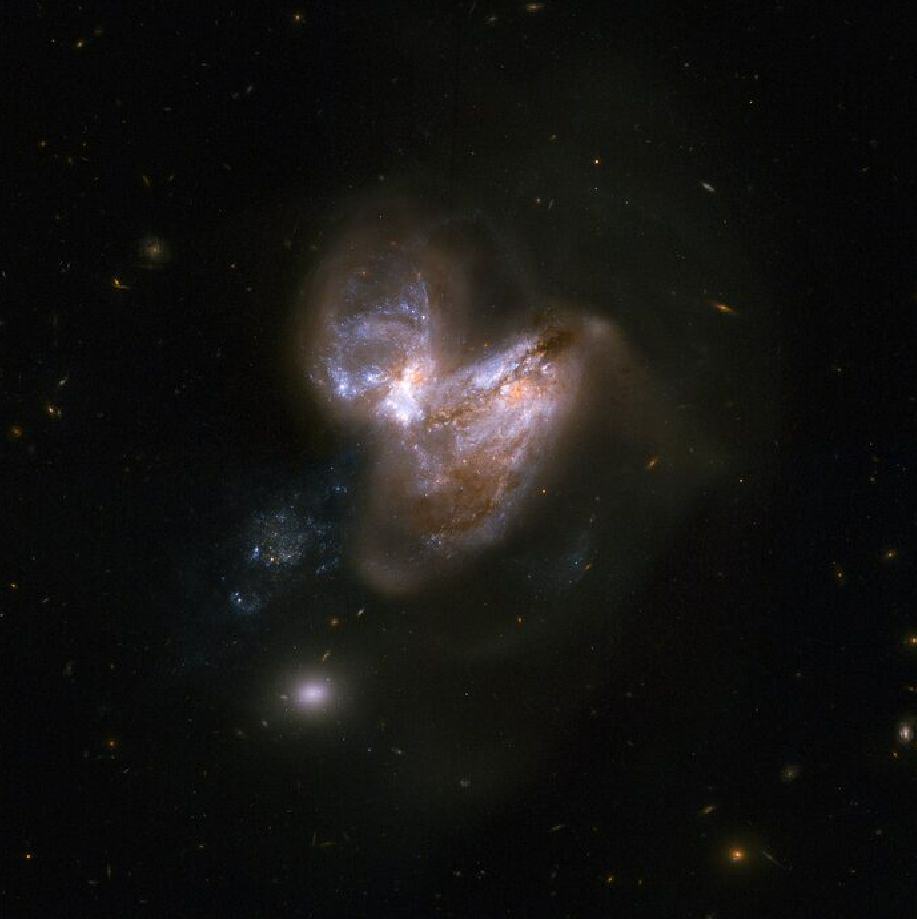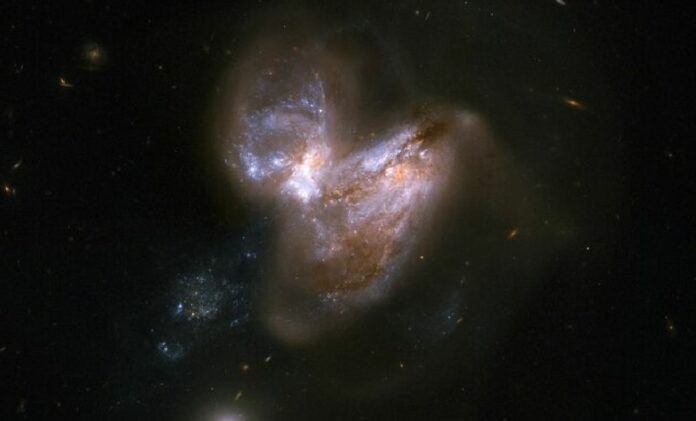Scientists from the Universities of Texas and Arizona have detected a fast-expanding black hole in one of the most violent galaxies known in the early Universe.
The galaxy and its black hole shed light on the earliest supermassive black holes.
The new study is published in the Royal Astronomical Society’s Monthly Notices.
Using observations from the Atacama Large Millimeter Array (ALMA), a radio observatory in Chile, the team has found that the galaxy COS-87259, which contains this new supermassive black hole, is very extreme. It forms stars at a rate 1000 times faster than our own Milky Way and has more than a billion solar masses of interstellar dust. This strong starburst and the expanding supermassive black hole at the galaxy’s core both glow brightly.
The black hole is thought to be a new type of primordial black hole, one that is heavily covered by cosmic “dust” and gives off almost all of its light in the mid-infrared range of the electromagnetic spectrum. The researchers have also discovered that the expanding supermassive black hole (also known as an active galactic nucleus) is producing a powerful jet of material that is speeding through the host galaxy at very close to the speed of light.
Nearly every galaxy’s center has a black hole with a mass that is millions to billions of times bigger than that of our Sun. The origin of these supermassive black holes is still a mystery to astronomers, especially because some of these phenomena were discovered when the Universe was still relatively young. Because it takes so long for the light from these sources to reach us, we see them as they were a long time ago. In this case, we see them just 750 million years after the Big Bang, which is about 5% of how old the Universe is now.
The most surprising thing about this new object is that it was found in an area of the sky less than 10 times the size of the full moon, which is usually used to find similar objects. This suggests that there could have been thousands of similar sources in the very early Universe. This was totally contrary to the prior data.
We only knew of quasars, active black holes largely unobscured by cosmic dust, as a separate class of supermassive black holes in the early Universe. At distances comparable to COS-87259, these quasars are exceedingly uncommon, with just a few tens seen throughout the whole sky. The unexpected discovery of COS-87259 and its black hole raises many questions about how common very early supermassive black holes are and what kinds of galaxies they usually form in.
The work suggests “that very early supermassive black holes were often heavily obscured by dust, perhaps as a consequence of the intense star formation activity in their host galaxies,” adds lead author Ryan Endsley.
“This is something others have been predicting for a few years now, and it’s really nice to see the first direct observational evidence supporting this scenario.”
Objects like Arp 299 have been discovered in the nearby, modern-day Universe. In this system, two galaxies are crashing into each other, which is causing a huge starburst and making it hard to see the growing supermassive black hole in one of the galaxies.

While finding this kind of object in the very early Universe wasn’t something anyone had anticipated, Endsley continues, “its discovery takes a step towards building a much better understanding of how billion solar mass black holes were able to form so early in the lifetime of the Universe, as well as how the most massive galaxies first evolved.”
Image Credit: NASA, ESA, the Hubble Heritage Team (STScI/AURA)-ESA/Hubble Collaboration and A. Evans (University of Virginia, Charlottesville/NRAO/Stony Brook University)
